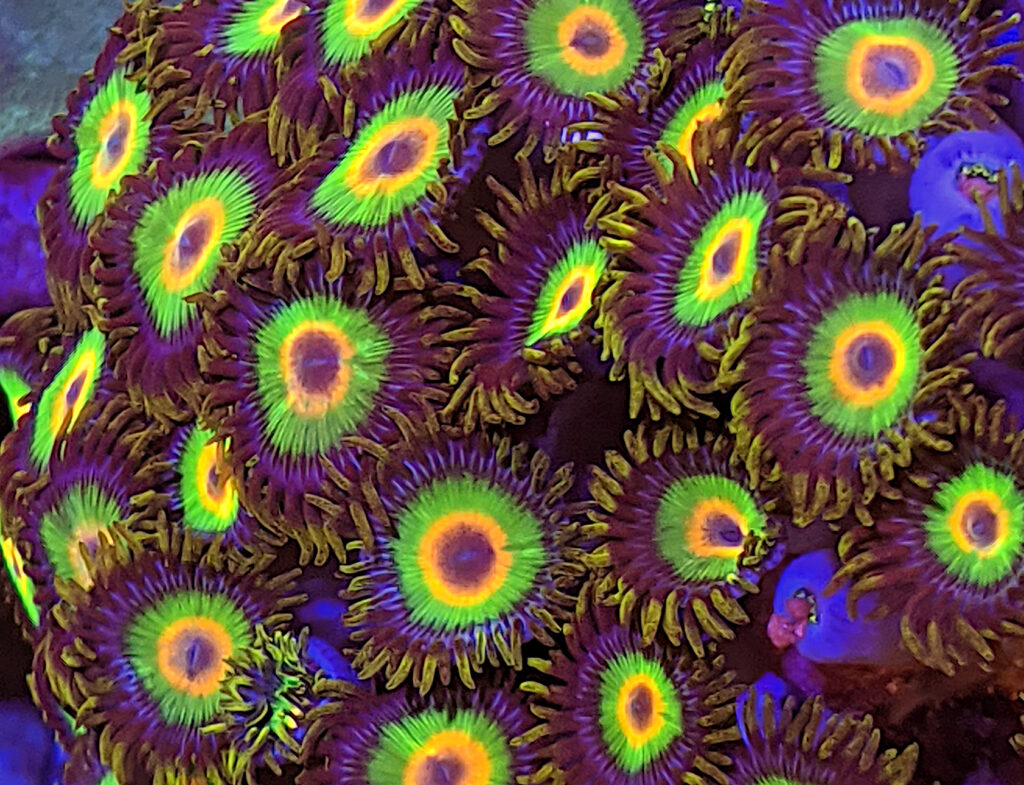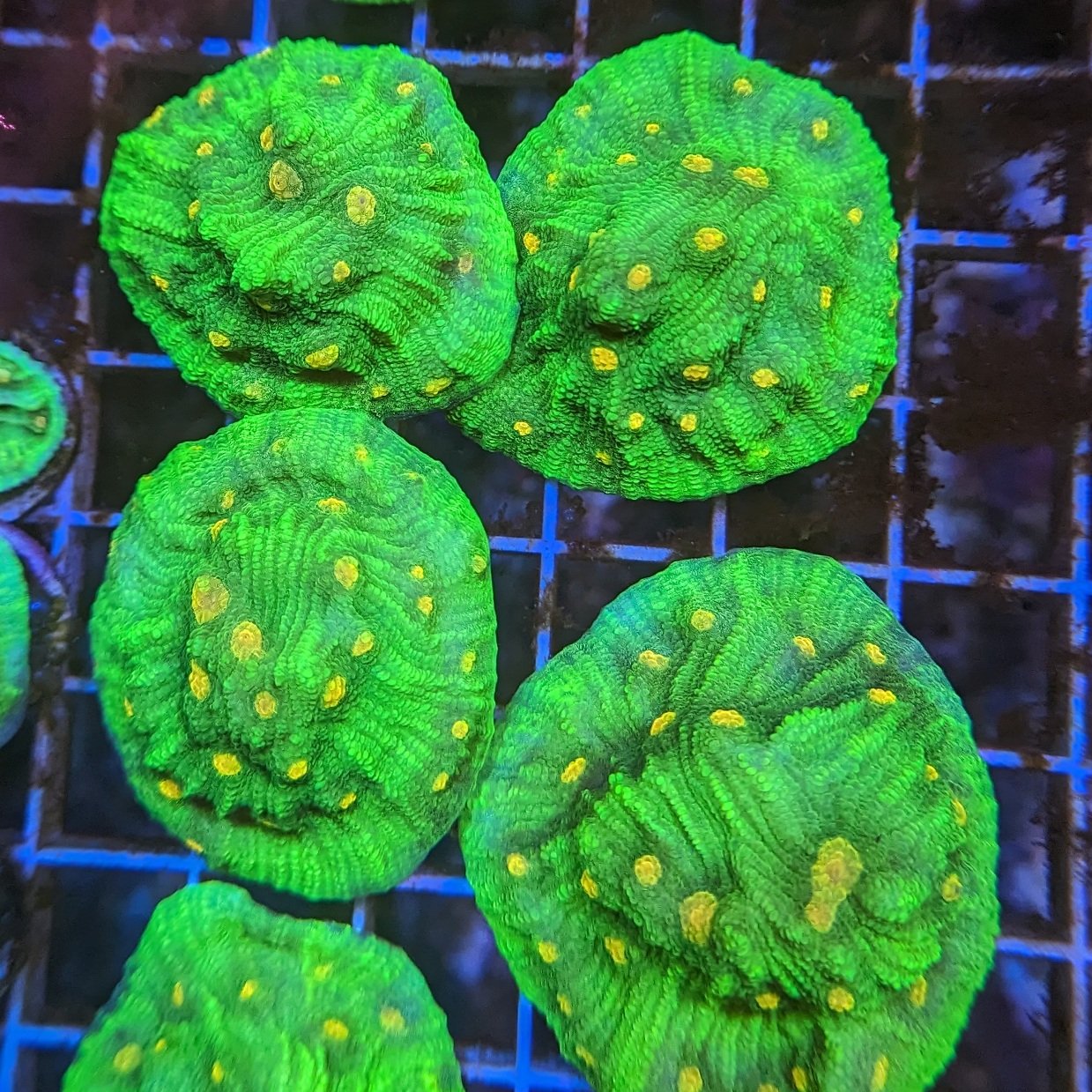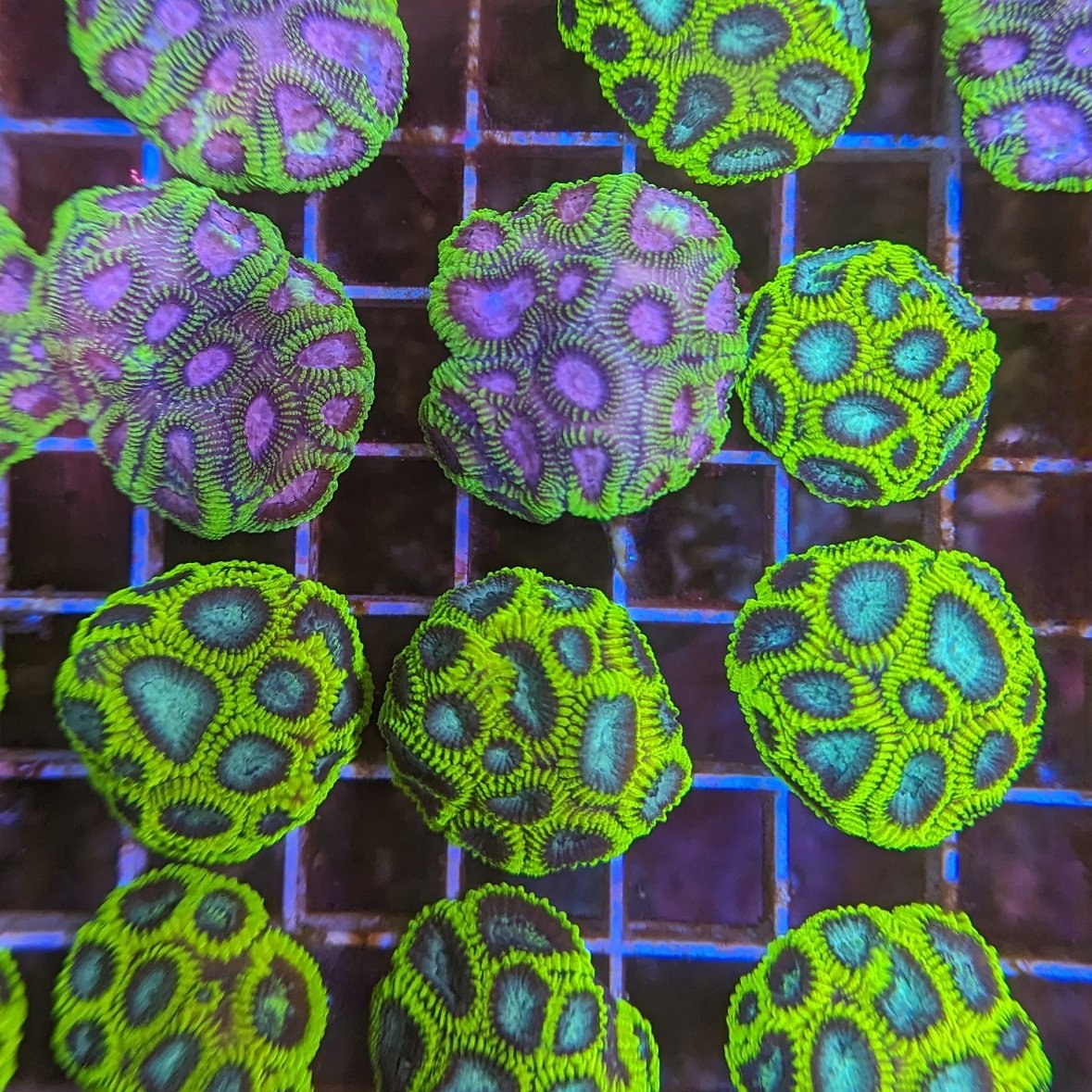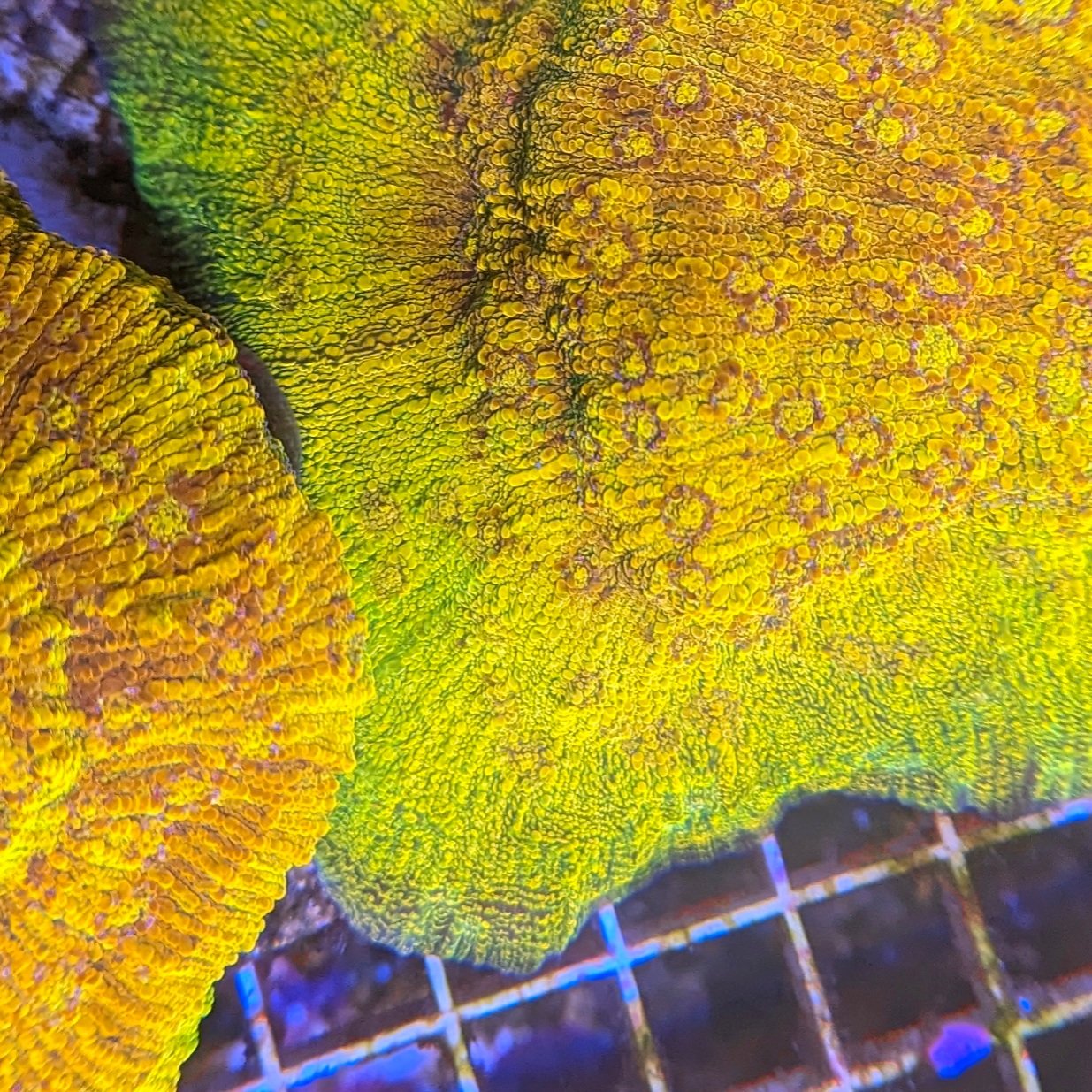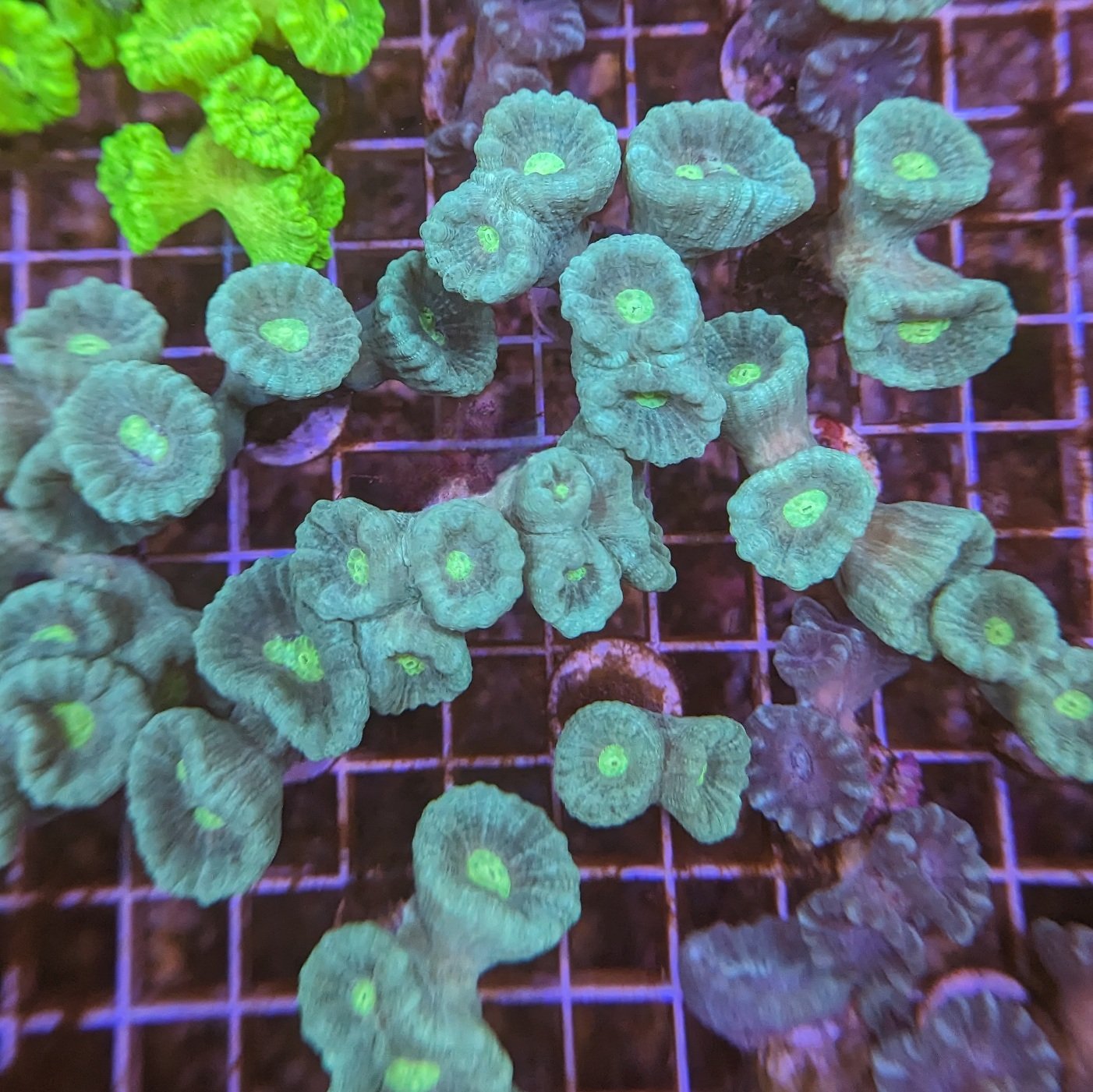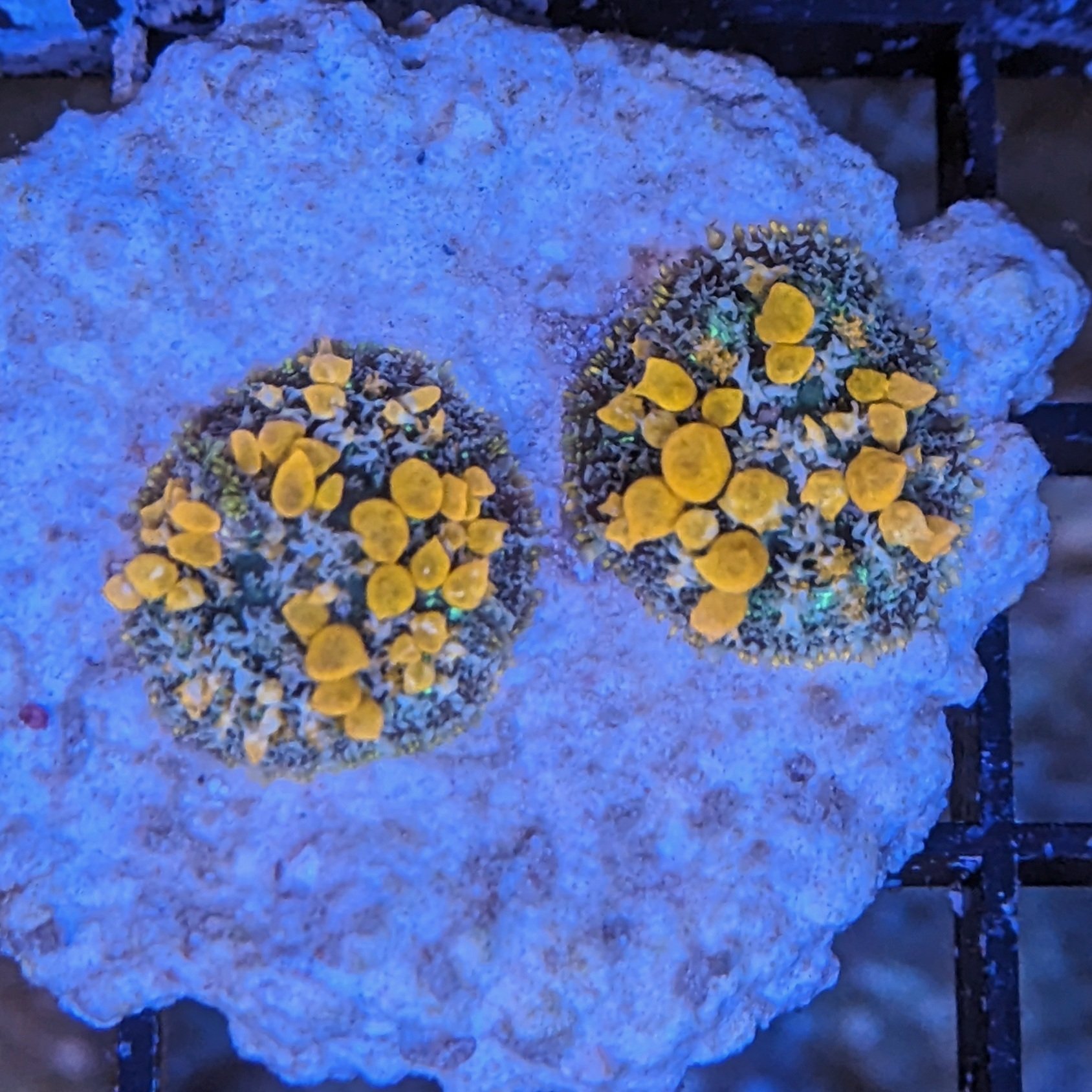When you buy a frag, it’s easy to assume that means it was “aquacultured”. But, what does that word REALLY mean? If it’s on a small plug or rock, it HAS to be aquacultured, right?
Not really. It’s entirely possible to order in colonies from the wild reefs, and cut them up when they arrive. A mere two weeks or less later it could appear to be being sold as aquaculture…but, it wouldn’t be. You could call it propagated, but you can’t call it cultured.
Here at TRF we are proud to say ALL of our corals are 100% aquacultured. We are a state certified aquaculture facility, and have been for close to 17 years. Our process is very strict; if we do import wild collected corals it begins with waiting as much as a year as it doubles or triples in size, and cutting it only once or twice to expose more growth edges. When beginning with an already aquacultured piece, this is much easier and most times faster, as we do not have to wait as long to determine that it has grown enough that it can be cut and deemed true aquaculture.
Many of our corals have been in production for close to 20 years, but there are always a few new gems we find that we simply MUST grow! However, we aren’t immune to mechanical failure at TRF any more than any other hobbyist is; nor is any of our staff perfect, and we do have issues from time to time. When that happens, we can’t help but note that it is always the newer corals; particularly any piece that still isn’t that far removed from a wild collected parent, that suffers the most. We look on sadly at a coral that can’t be saved and say to one another “It was too new to go through that kind of stress”. Some of our corals have accidently seen 60 degrees and freshwater for at least an hour (yes, at the same time) and lived to tell the tale to further generations of their clones.
Why is that important? Because there is aquaculture, and then there is close to bulletproof. A coral can become aquacultured just one generation removed from the parent, but it will react much differently than further generations down. Frankly, it just won’t be as tough. There is a piece that “has been aquacultured” and then there is a piece that “has been in aquaculture for forever”. The latter will wind up being the one to survive that time you left your top off running, while the other may well still perish.
So, what makes a coral “aquacultured”? Truthfully, we are willing to give it a pass if even 50% of the flesh has been grown in captivity. There is a old schooler reefers term meant as an insult (and still used today) for a business that imports wild collected and cuts and sells it immediately, not even really allowing it time to adjust and heal – and such “chop shop” companies are still out there, we are sad to say. That said, there are SO MANY wonderful companies out there that DO truly aquaculture coral, and as you grow as a reefer it will become easy to tell the difference yourself, we promise! Until then, Sustainable Reef is working on verifying a list, beginning at wholesale level; BUT if you check with these companies, some of them are now offering retail sales!

